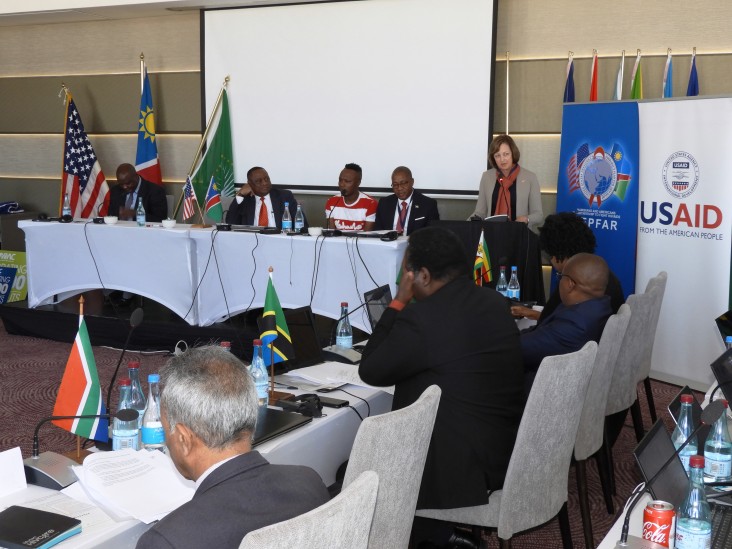Speeches Shim

- Honorable Dr. Kalumbi Shangula, Minister of Health and Social
Services; - Mrs. Anne-Marie Nitschke, Director of Special Programs, MOHSS;
- Mr. Alfons Amoomo, Health Director of the Omusati Region;
- Mr. Petrus Angala, Health Director of the Oshikoto Region;
- Ms. Elizabeth Muremi, Health Director of the Khomas Region;
- Other Ministry and Government representatives;
- Colleagues from U.S. agencies and implementing partners;
- Health care workers;
- Members of the media;
- Ladies and gentlemen;
Good morning and welcome!
I am very pleased and proud to join you for this important milestone event, which tells yet another Namibian success story.
150,000! This is the magic number we are celebrating today. We are celebrating 150,000 smart male Namibians who have volunteered to get the “smart cut.”
Under the leadership and guidance of the Ministry of Health and Social Services, these boys and men received a safe Voluntary Medical Male Circumcision (VMMC). Their action significantly contributed to the country’s fight against HIV. And yes, these smart boys and men deserve a round of applause.
So, what does circumcision have to do with HIV? To understand this, we need to highlight another important number: 60 percent.
VMMC reduces a man’s chances of HIV infection by 60 percent. This is a scientific fact. And a reduction of new infections in men also means that women will have a lower risk of being infected by their male partners. VMMC is therefore a critical component for breaking the cycle of HIV infection.
I would like to reiterate that VMMC is only one of many interventions in the HIV prevention toolbox. Others are pre-exposure prophylaxis, or PrEP, and condoms. Circumcision does not substitute for a condom, which, if used correctly, provides the best protection, as a condom will also prevent pregnancy and the transmission of Sexually Transmitted Infections (STIs).
The majority of these 150-thousand circumcisions were conducted over the last three years. I therefore say to you, the Honourable Minister and partners, health workers and nurses, “Congratulations!”
Though we are celebrating a milestone, there is still a lot of work ahead until Namibia reaches the 80 percent male circumcision coverage necessary to have a meaningful impact on new HIV infections.
Data from the NAMPHIA survey shows that the country’s VMMC prevalence is at 36 percent among men ages 15 to 64. Regional variations range from as high as 65 percent in the Zambezi Region to a meager 12 percent in the Hardap Region.
What this means is that we are still experiencing barriers. Some of these barriers are societal misconceptions about circumcision. Others are physical barriers such as actual access to services. Many Namibian men still have no access to safe medical circumcision. And sometimes, individuals have to cover long distances to reach a health facility that offers VMMC.
To help alleviate this challenge, today I will hand over camping equipment to support VMMC outreach services in the field. The equipment is supplied by the AIDSFree project with funding from PEPFAR, through USAID. With this equipment, health workers will be able to go and stay in areas where there is no other accommodation in order to access remote, rural communities.
Health workers are at the forefront of Namibia’s HIV response. They devote their lives to a noble cause – they too deserve a round of applause.
Namibia has nearly achieved the UNAIDS 95-95-95 goals for 2030 to achieve HIV epidemic control. It is estimated that currently, 94 percent of all HIV-positive Namibians know their status, 96 percent of those who know they are positive are on anti-retroviral treatment (ART), and of those on treatment, 95 percent are virally suppressed - which means it is impossible for them to transmit the virus. Undetectable = Untransmittable.
However, as in any race, the last mile is the hardest. I am here to assure you of the U.S. Government’s continued commitment to the Government of Namibia to reach the last few HIV-positive individuals in the country who do not know their status and therefore are not yet on treatment.
The U.S.-Namibia partnership is very strong, and together, our joint efforts will achieve epidemic control, soon.
Thank you.

Comment
Make a general inquiry or suggest an improvement.